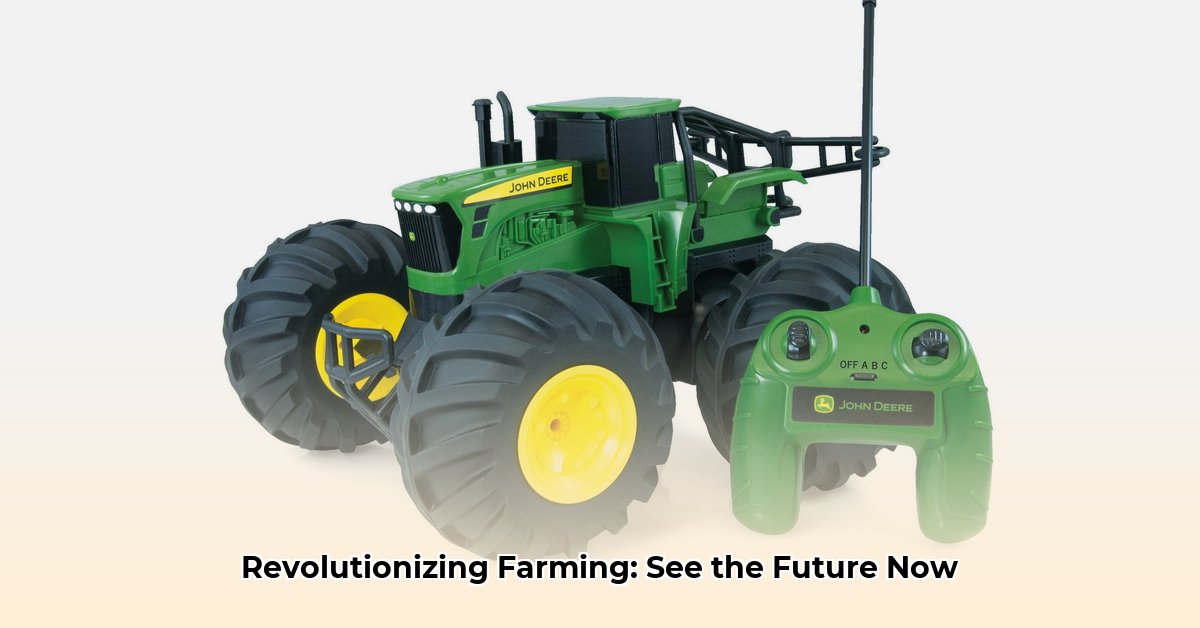
Farming is undergoing a technological revolution, and John Deere's remote tractors are at the forefront. Imagine managing a fleet of tractors from your farmhouse, regardless of weather or terrain. This isn't science fiction; it's the reality of modern agriculture, driven by innovations like the John Deere 6210R and other remote-controlled models. For more information on John Deere dashboards, check out this helpful guide: John Deere symbols. This article explores the technology, its benefits, challenges, and the future of remote farming.
How John Deere's Remote Tractor Technology Works
John Deere's remote tractor system allows farmers to control their tractors from a distance using a tablet or specialized controller. A reliable network connection acts as the communication link, transmitting commands and receiving data about the tractor's operation. The system enables remote steering, implement operation, and real-time monitoring of fuel use, soil conditions, and equipment performance. Think of it as a sophisticated, high-tech extension of the farmer's hands and eyes, operating across distances. This technology allows for continuous operation, regardless of the environmental conditions. Isn't that remarkable?
The Advantages of Remote Tractor Farming: A Productivity Boost
The benefits of remote tractor operation are numerous and impactful. A single operator can manage multiple tractors simultaneously, significantly boosting productivity and addressing the ongoing challenge of labor shortages in agriculture. This translates to substantial cost savings and increased output. Furthermore, remote operation enhances worker safety by removing the operator from potentially hazardous situations and eliminating exposure to harsh weather. The potential for 24/7 operation further extends efficiency, maximizing planting and harvesting windows and ultimately leading to increased yields. How impressive is the advancement in agricultural technology?
The Challenges of Remote Farming: Overcoming the Hurdles
While the potential is immense, several challenges need careful consideration. The high initial investment cost is a considerable barrier for many farmers. Reliable internet connectivity is essential for successful operation; a lack of network access in rural areas poses a significant hurdle. The technology is still evolving, and full autonomous capabilities are yet to be fully realized. Farmers must carefully assess their existing infrastructure and operational needs before adopting this technology. This means thoughtful planning, financial readiness, and an understanding of the potential risks.
The Future of Remote Farming: A Vision of Efficiency and Sustainability
The future of farming is increasingly remote. Advancements in autonomous capabilities and improved connectivity are poised to revolutionize the industry further. Imagine farms managed by centralized computer systems, coordinating fleets of autonomous tractors working around the clock. This vision, while futuristic, is rapidly becoming reality. However, addressing crucial aspects such as regulation, data security, and ensuring equitable access to this technology will be essential to its wider adoption and positive impact. This means significant policy discussions and technological planning for a more sustainable future.
Real-World Stories: Early Adopters Share Their Experiences
Early adoption of John Deere's remote tractors has yielded positive results in many cases. Several large farms have reported significant cost savings and enhanced operational efficiency. However, success hinges on careful planning, adequate training, and a clear understanding of the technology's capabilities and limitations. The need for comprehensive staff training emerges as a critical success factor for businesses integrating this technology.
John Deere Remote Tractors: A Balanced Look at the Benefits and Drawbacks
Let's concisely summarize the advantages and disadvantages:
| Advantages | Disadvantages |
|---|---|
| Dramatically increased efficiency and output | High initial investment cost |
| Reduced labor costs and associated expenses | Dependence on reliable network connection |
| Improved worker safety | Potential for equipment malfunctions & downtime |
| Ability to work in challenging conditions | Requires significant employee training and expertise |
| Extended operational window, maximizing yields | Ongoing maintenance and software updates are necessary |
The Broader Impact: Sustainable Agriculture for the Future
John Deere's remote tractor technology is more than just advanced machinery; it's a catalyst for a more efficient, sustainable, and resilient food production system. This technology is reshaping the agricultural landscape, creating opportunities while simultaneously presenting challenges that require proactive solutions and ongoing adaptation. The journey toward a fully remote and automated agricultural future has only just begun.